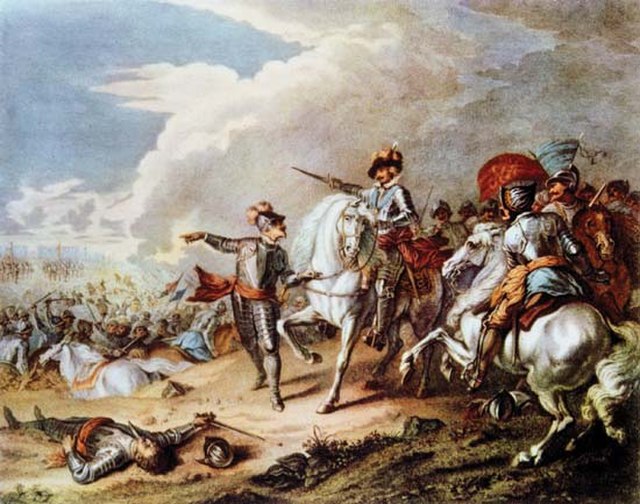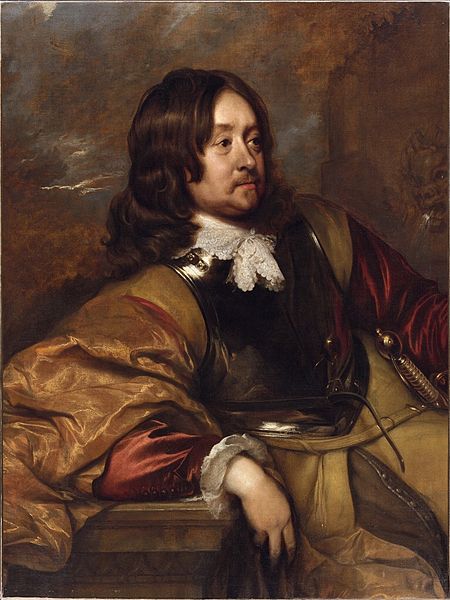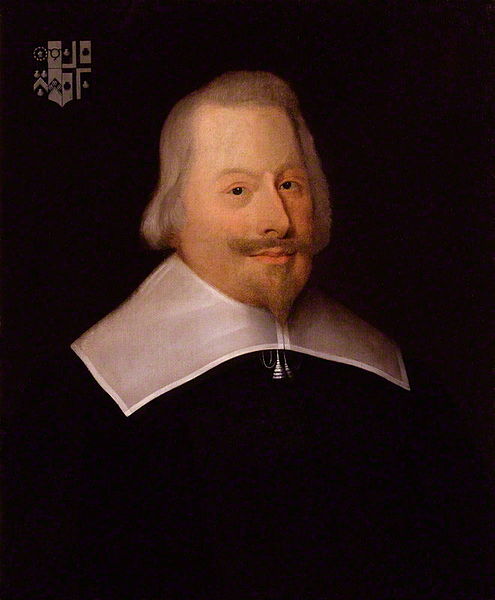The Battle of Naseby took place on 14 June 1645 during the First English Civil War, near the village of Naseby in Northamptonshire. The Parliamentarian New Model Army, commanded by Sir Thomas Fairfax and Oliver Cromwell, destroyed the main Royalist army under Charles I and Prince Rupert. Defeat ended any real hope of royalist victory, although Charles did not finally surrender until May 1646.
Battle memorial, and beyond the fields of Broad Moor, the site of the battle
Sir Thomas Fairfax, Parliamentarian commander
Battle of Naseby, hand-coloured copper engraving by Dupuis after Parrocel, 1727 (for Rapins History, v.2, p. 527)
Royalist horse after the battle, painting by Sir John Gilbert, 1860
The First English Civil War took place in England and Wales from 1642 to 1646, and forms part of the 1639 to 1653 Wars of the Three Kingdoms. An estimated 15% to 20% of adult males in England and Wales served in the military at some point between 1639 and 1653, while around 4% of the total population died from war-related causes. These figures illustrate the widespread impact of the conflict on society, and the bitterness it engendered as a result.
'Cavalier Troops Mustering outside the Guildhall, Exeter' by John Joseph Barker, 1886, from the Royal Albert Memorial Museum's collection
Edward Hyde, later Earl of Clarendon, ca 1643; originally part of the Parliamentary opposition, in 1642 he became Charles' chief advisor
John Pym, who led the opposition to Charles from 1640 until his death in December 1643
Charles' nephew and most talented general, Prince Rupert, popularised during the Victorian era as the archetypal Cavalier








